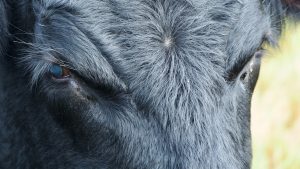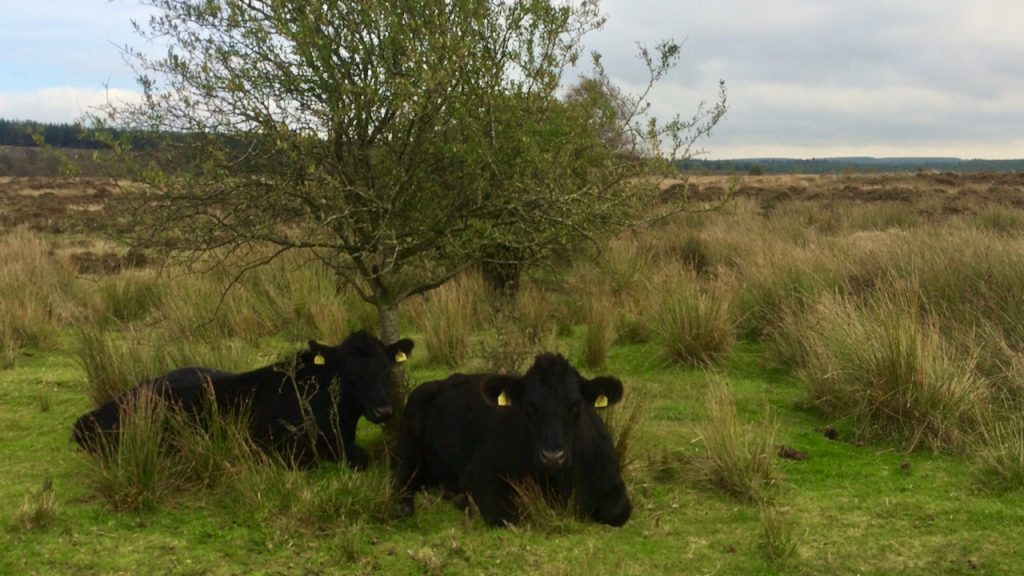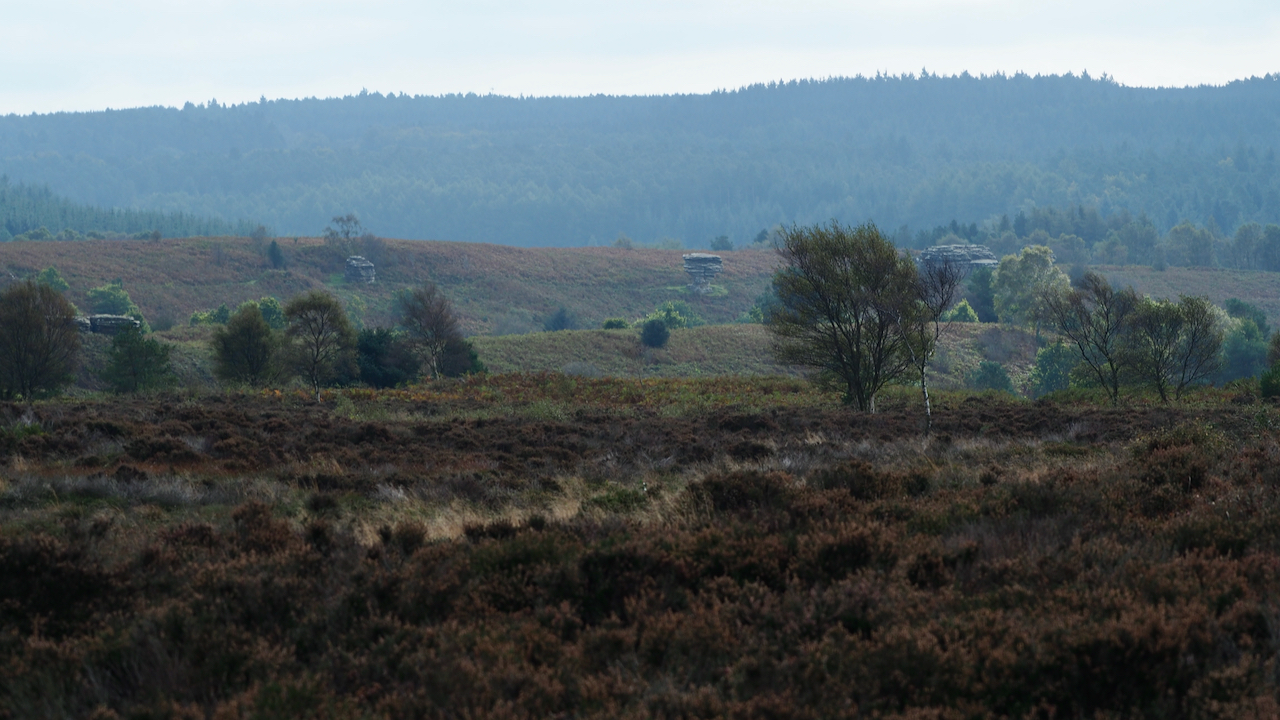Bridestones Moor has been managed for nature since 1943 when the National Trust was bequeathed the 165 acre estate including the small farm of Low Staindale.
The Times reported that “this is a wild and beautiful region, the haunt of curlew and grouse, with lovely stretches of heather, attracting many visitors for its own sake as well as to see the bridestones“2‘National Trust Acquisition’ (1943) Times, 08 Apr, 6, available: https://link-gale-com.ezproxy.is.ed.ac.uk/apps/doc/CS101792904/GDCS?u=ed_itw&sid=bookmark-GDCS&xid=80c2bdec [accessed 06 Oct 2021]..
The Bridestones are the dozen or so tors of Corallian siliceous sandstone which are more resistant to the effects of the weather than the surrounding calcium carbonate which have slowly dissolved by the action of rainwater.
 As the moor has not been intensively managed for the production of grouse nor by over-grazing by sheep, it is an exceedingly rich diverse habitat. However, self-seeded conifers from the contiguous Dalby Forest need to be periodically pulled out, and the ever encroaching bracken too needs to be controlled. Best equipped to trample and break up the bracken rhizomes are a herd of hardy cattle.
As the moor has not been intensively managed for the production of grouse nor by over-grazing by sheep, it is an exceedingly rich diverse habitat. However, self-seeded conifers from the contiguous Dalby Forest need to be periodically pulled out, and the ever encroaching bracken too needs to be controlled. Best equipped to trample and break up the bracken rhizomes are a herd of hardy cattle.
Some plants such, as Juniper, are pioneers requiring a minimal covering of vegetation in order to germinate. Under ‘natural’ conditions, these areas of disturbed ground could come about by episodes of intensive browsing and trampling by migratory native herbivores3“MOORLAND RESEARCH REVIEW 2000-2005”. Edited by Martin Hammond. North York Moors National Park Authority 2007.. The introduction of cattle on open moorland is an attempt at replicating this pioneering ecology.

- 1Gov.scot. (2018). Scottish Forestry – 6.2.2 Selecting species and breed of livestock. [online] Available at: https://forestry.gov.scot/woodland-grazing-toolbox/grazing-management/grazing-regime/selecting-species-and-breed [Accessed 7 Oct. 2021].
- 2‘National Trust Acquisition’ (1943) Times, 08 Apr, 6, available: https://link-gale-com.ezproxy.is.ed.ac.uk/apps/doc/CS101792904/GDCS?u=ed_itw&sid=bookmark-GDCS&xid=80c2bdec [accessed 06 Oct 2021].
- 3“MOORLAND RESEARCH REVIEW 2000-2005”. Edited by Martin Hammond. North York Moors National Park Authority 2007.

Leave a Reply